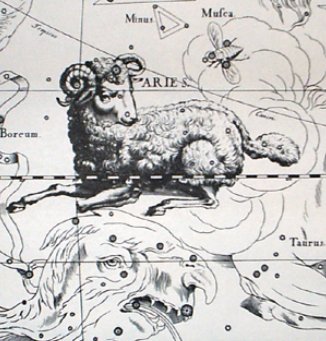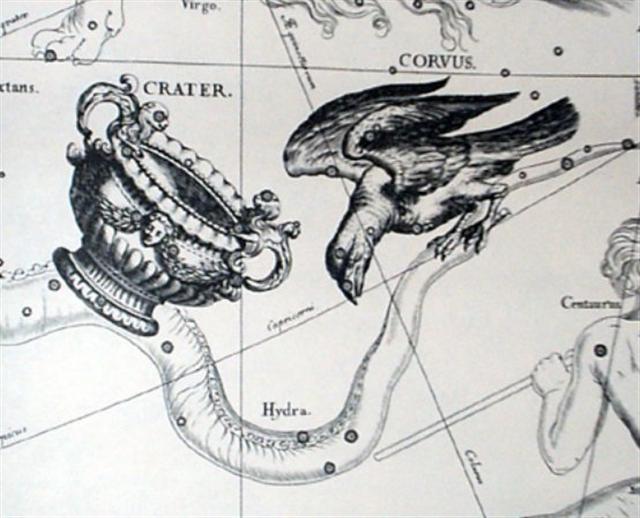However, the text appears to also describe the flow of time before the reforms of Julius Caesar, before his introduction of the Bissextum leap day. Because there are 22 glyphs between Ca1-2 and Ca1-25, which period therefore could correspond the 22 extra days in the old Roman Mensis Intercalaris:
... The ordinary year in the previous Roman calendar consisted of 12 months, for a total of 355 days. In addition, a 27-day intercalary month, the Mensis Intercalaris, was sometimes inserted between February and March. This intercalary month was formed by inserting 22 days after the first 23 or 24 days of February; the last five days of February, which counted down toward the start of March, became the last five days of Intercalaris. The net effect was to add 22 or 23 days to the year, forming an intercalary year of 377 or 378 days.
| Ianuarius |
29 |
| Februarius 23 |
23 |
| Mensis Intercalaris: |
| Extra days |
22 |
27 |
| Februarius 24-28 |
5 |
When the Mensis Intercalaris was used, it meant the extent of February was not 23 + 5 = 28 days but 23 + 22 + 5 = 50 days. Counting 'inclusive' the number of days was not 29 but 51 days.
In rongorongo times Algenib Pegasi rose with the Sun 50 days after March 21 and in the times of Al Sheratain the star of spring light was in RA day 340 = 290 + 50:
| 'Februarius 21 |
22 |
23 (Terminalia) |
| no glyph |
 |
 |
| Ca1-1 |
Ca1-2 |
| koia |
ki te hoea |
| Al Fargh al Thāni-25 / Uttara Bhādrapadā-27 / Wall-14 |
χ Pegasi (340.4), θ Andromedae (341.0) |
| Caph, SIRRAH (338.8), ε Phoenicis (339.1) |
ALGENIB PEGASI (340.0) |
| Alchita, Ma Wei (156.1), Minkar (156.7), ρ Centauri (156.9) |
Pálida (157.6), Megrez (157.9) |
Hasta-13 / Chariot-28 |
| GIENAH (158.1), ε Muscae (158.2), ζ Crucis (158.4), Zaniah (158.9) |
| 22 |
'Februarius 24 |
25 |
26 |
 |
 |
 |
| Ca1-25 |
Ca1-26 |
Ca2-1 (27) |
| kiore ki te huaga |
kua moe ki te tai. |
Te heke |
| no star listed |
ANA-NIA |
Al Sharatain-1 / Ashvini-1 / Bond-16 |
| POLARIS, Baten Kaitos (364.8), Metallah (365.1) |
Segin, Mesarthim, ψ Phoenicis (0.2), SHERATAN, φ Phoenicis (0.4) |
| τ Bootis (181.2), Benetnash (181.5), ν Centauri (181.7), μ Centauri, υ Bootis (181.8) |
no star listed |
Muphrid (183.1), ζ Centauri (183.3) |
| 27 |
28 |
|
29 |
'Martius 2 |
3 |
 |
 |
 |
 |
 |
| Ca2-2 |
Ca2-3 |
Ca2-4 (30) |
Ca2-5 |
Ca2-6 |
| erua tagata |
te henua |
tagata oho ki tona huaga |
kua oho |
| ι Arietis (1.0), λ Arietis (1.2) |
Alrisha, χ Phoenicis (2.2), Alamak (2.7) |
κ Arietis (3.3), Hamal (3.5)
Alkes
|
η Arietis (4.9) |
no star listed |
| φ Centauri (184.0), υ¹ Centauri (184.1), υ² Centauri (184.8), τ Virginis (184.9) |
Agena (185.1), θ Apodis (185.5), Thuban (185.8) |
χ Centauri (186.0), Menkent (186.1) |
Neck-2 |
Al Ghafr-13 / Svāti-15 |
| Asellus Tertius, κ VIRGINIS, 14 Bootis (187.8) |
15 Bootis (188.2), ARCTURUS (188.4), Asellus Secundus (188.5), SYRMA, λ Bootis (188.6), η Apodis (188.8) |
The leading star of Aries was Hamal (α), representing the constellation as a whole and appropriately placed at the head of the animal:

Applying the Roman method of incuding Martius 1 in the previous month means it became the last day (29) of Februarius:
... The
leap day
was
introduced
as part
of the
Julian
reform.
The day
following
the
Terminalia
(February
23) was
doubled,
forming
the 'bis
sextum
-
literally
'double
sixth',
since
February
24 was
'the
sixth
day
before
the
Kalends
of
March'
using
Roman
inclusive
counting
(March 1
was the
'first
day').
With Martius 2 began the Kalends of March, and 29 (Ianiarius) + Februarius (23 + 22 + 5 + 1 = 51) = 80 was the number of days before Martius 2.
However, the glyphs indicate a new beginning from Ca2-4 (29 + 1). Before Ca2-4 a standstill is illustrated with persons looking straight at us, but at the other side of the 'central ceremonial ground' (raaraa) the people are eating again as a sign of life having returned. The 'holes' were open again:
|
Then he went with his father Qinggi, they say. |
|
As soon as Qinggi landed at his town, |
|
he gave a feast. |
|
He tried to make the one we speak of eat. |
|
But he would not accept a morsel. |
|
Qinggi gave a feast again the next day. |
|
to make his child eat. |
|
Again he would eat nothing. |
|
Two greedyguts arrived, |
|
and someone grabbed a storage chest of cranberries. |
|
One of the two greedyguts opened up his maw. |
|
They poured in the whole boxful. |
|
They poured one down the other's throat as well. |
|
Next day, his father gave another feast. |
|
The greedyguts arrived. |
|
Again they poured entire storage chests |
|
of cranberries into their mouths. |
|
The one we are speaking of ran to the edge of town. |
|
As he was walking there, |
|
cranberries bubbled up out of the swampland. |
|
He plugged the vent with moss. |
|
When another vent formed, he plugged it too. |
|
Then he went back to the house |
|
and asked the greedyguts closest to the door, |
|
'Tell me, how do you manage to eat so much?' |
|
'Sir, don't ask that. |
|
Do you think this is a happy way to be?' |
|
'No, but tell me. |
|
If you will eat |
|
at every feast my father gives. |
|
If you don't agree to tell me, |
|
I will plug you up for good'. |
|
'Alright, sir, sit beside me. |
|
I will tell you what to do. |
|
In the morning, take a bath and then lie down. |
|
Rub yourself raw where you feel it most deeply. |
|
By the following day, a scab will form. |
|
You must swallow the scab. |
|
He followed these instructions. |
|
Then, after sitting there awhile: |
|
'Father, I'm hungry!' |
|
His father gave a feast without delay. |
|
Again the greedyguts arrived. |
|
Again they upended boxes into their mouths. |
|
He couldn't be filled. |
|
He was famished. |
|
Qinggi gave another feast. |
|
Then he gave another and another, day after day. |
|
At last, the one we speak of went outside. |
|
When he kept picking cranberries out of their turds, |
|
they saw who it was, |
|
and they shut the door in his face. |
|
Then he walked away, they say. |
|
He went around behind his father's house. |
|
'Father, let me come in!' |
|
No answer. |
|
They turned him away |
They turned Raven away because his place was in winter. They flushed him away with the 2nd Spout (Al Fargh al Thāni) - the 25th Arab manzil which was relying on both Sirrah and Algenib.
At the other side of the year the empty crater and Raven were looking towards the Abyss where all the water had gone down:

|








